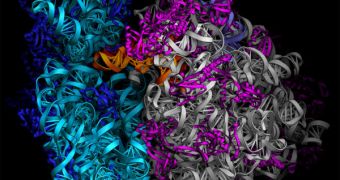According to the Royal Swedish Academy of Sciences, which manages the most famous awards in the scientific community, the 2009 Nobel Prize for Chemistry will be shared jointly by three experts, “for studies of the structure and function of the ribosome.” In their amazing work, the trio managed to use X-ray crystallography to map out the position of each individual atom from the hundreds of thousands that make up a ribosome, and also to evidence the structures' basic operating principle.
The award will be shared equally among Venkatraman Ramakrishnan, of the MRC Laboratory of Molecular Biology at the Cambridge University, in the United Kingdom, Thomas A. Steitz, from the Yale University, in New Haven, Connecticut, and Ada E. Yonath, from the Weizmann Institute of Science, in Rehovot, Israel. The reason why ribosome research is so important, the Swedish experts have concluded, is because it provides a key to understanding how DNA strands are turned into nothing else than life, AlphaGalileo reports.
Ribosomes are the main structures in charge of producing proteins, which are the basic workforce inside any organism. They essentially make things happen and are responsible for placing something either in the “living,” or in the “inanimate” category. The process through which genetic information is passed from DNA to proteins is one of the most complex there are. Ribosomes can produce antibodies for the immune system, hemoglobin (a metalloprotein that plays a fundamental part in transporting oxygen in the blood stream), hormones (such as insulin), collagen (for the skin), as well as enzymes.
Because the three scientists have created 3D models of ribosomes, and have mapped out its internal structure to the greatest amount of details possible, in the near future, other experts and pharmaceutical companies will be able to devise drugs and therapies that will target the ribosomes on pathogens directly. Without these structures, no living organism can function and dies immediately. Through their work, the team have managed to bring the goal of alleviating human suffering a little bit closer.
This year's Nobel Prize for Medicine went to chromosome researchers, for the discovery of the enzyme telomerase. The Prize for Physics was split among a fiber-optics innovator and the developers of the light sensors used in modern-day digital cameras.

 14 DAY TRIAL //
14 DAY TRIAL //